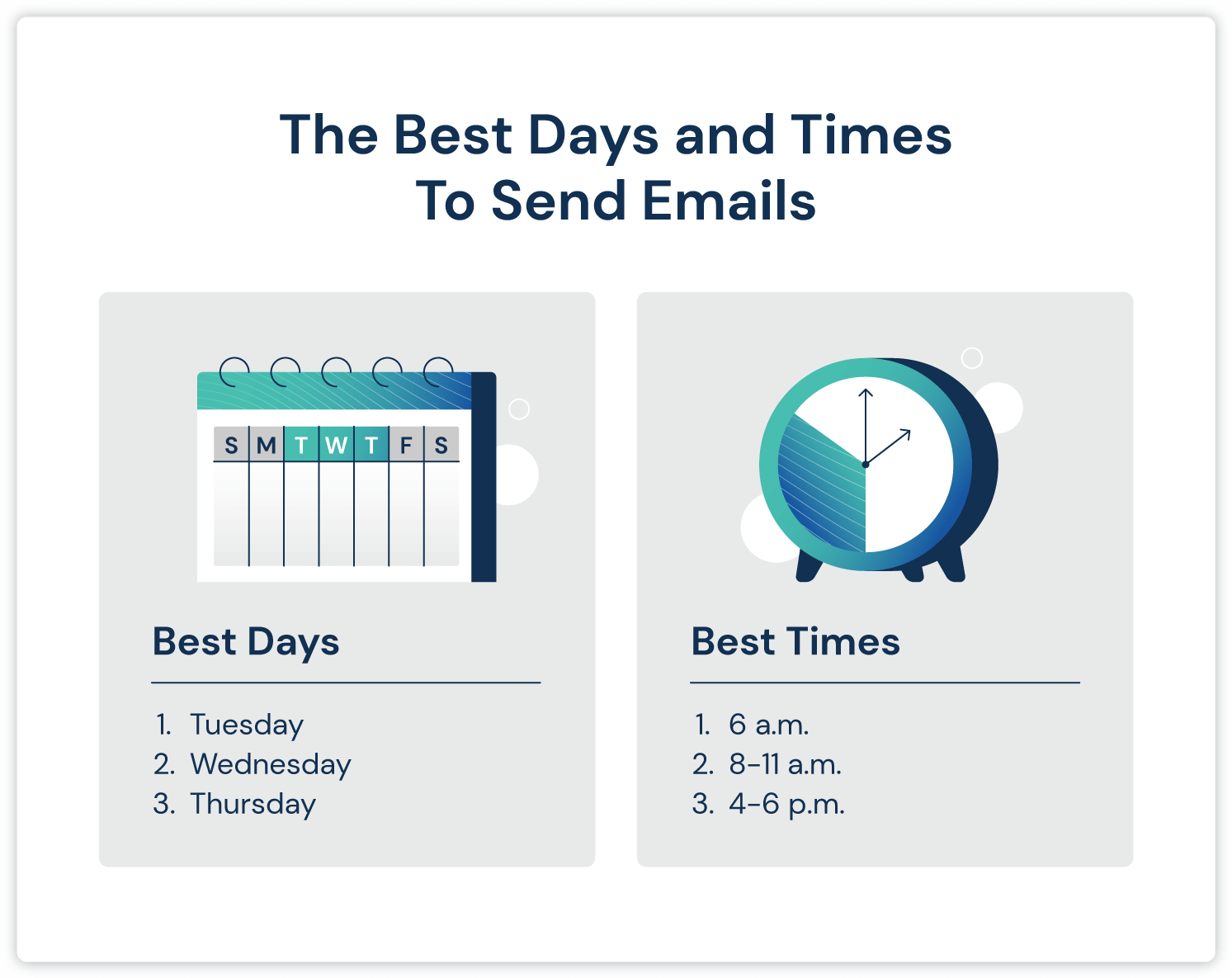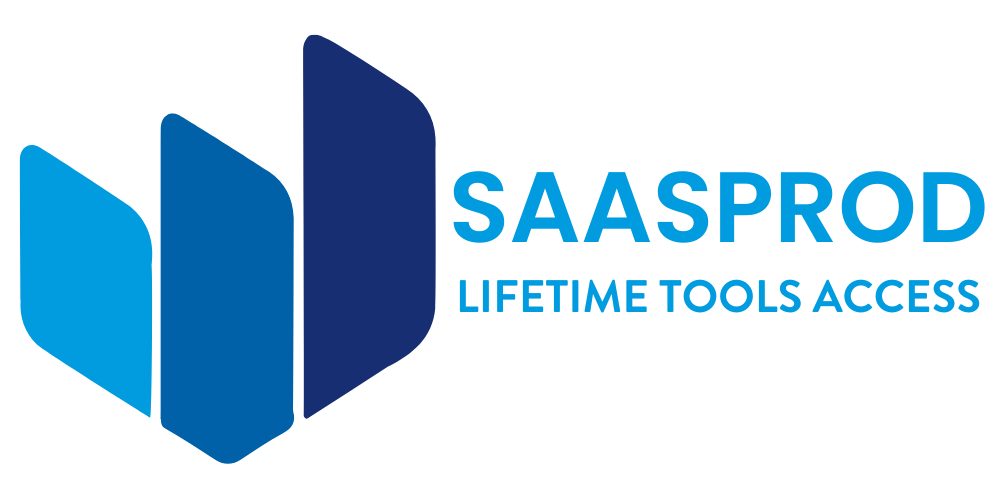Finding the best time to send email marketing campaigns can boost open rates. Timing plays a crucial role in email marketing success.
Email marketing is a powerful tool. But, sending emails at the wrong time can lead to low engagement. The best time to send emails depends on your audience and their habits. Understanding these habits is key to maximizing the effectiveness of your campaigns.
In this post, we will explore various factors that influence the perfect timing for email marketing. From understanding your audience’s daily routine to considering time zones, we will provide insights to help you choose the optimal time. This knowledge can lead to more opened emails, better engagement, and ultimately, higher conversion rates. Let’s dive in and find the best time for your email marketing success.

Credit: coschedule.com
Importance Of Timing In Email Marketing
The Importance of Timing in Email Marketing cannot be overstated. Getting the timing right can dramatically improve your campaign’s success. Sending emails at the perfect time increases the chances of engagement. This leads to higher open and click-through rates, resulting in better conversions.
Impact On Open Rates
Open rates are crucial for email marketing success. Sending emails at the wrong time reduces the likelihood of them being opened. Studies show that emails sent during work hours have higher open rates. Tuesdays and Thursdays are generally considered the best days to send emails.
Effect On Click-through Rates
Click-through rates (CTR) measure how many recipients clicked on links in your email. Timing can significantly impact CTR. Emails sent during lunch breaks often see higher CTR. Early mornings and late evenings tend to have lower CTR.
- Early Morning: Low CTR
- Lunch Break: High CTR
- Afternoon: Moderate CTR
- Evening: Low CTR
Understanding the Importance of Timing in Email Marketing helps optimize your campaigns. This leads to better engagement and higher conversion rates.

Credit: www.linkedin.com
Analyzing Audience Behavior
To maximize the impact of your email marketing efforts, understanding your audience’s behavior is crucial. Analyzing audience behavior helps determine the best time to send emails. This ensures your messages are read and acted upon.
Understanding Time Zones
Sending emails at the right time requires understanding your audience’s time zones. A well-timed email can lead to higher open and click rates. Use tools to track the locations of your subscribers. This helps to schedule emails when your audience is most active.
Example:
| Time Zone | Best Sending Time |
|---|---|
| EST | 9 AM – 11 AM |
| PST | 8 AM – 10 AM |
| GMT | 10 AM – 12 PM |
Segmenting By Demographics
Different demographics may prefer different email times. Segmenting your audience by age, gender, or profession can help. For example, professionals might check emails in the morning. Students might check emails in the afternoon.
Steps to Segment:
- Collect demographic data during sign-up.
- Use email marketing tools for segmentation.
- Create tailored messages for each segment.
- Analyze open rates and adjust timings.
By understanding and analyzing your audience’s behavior, you can send emails at the optimal time. This increases engagement and improves overall campaign success.
Best Days Of The Week
Choosing the right day to send email marketing campaigns is crucial. The day you choose can impact open rates, click-through rates, and conversions. Understanding the best days of the week can help you maximize the effectiveness of your email marketing efforts.
Weekday Vs Weekend
Weekdays generally perform better than weekends for email marketing. People are more likely to check their emails on weekdays. They are in work mode and tend to be more responsive.
Tuesdays and Thursdays are often considered the best days. These days see higher open and click-through rates. Wednesday also performs well, as it falls in the middle of the workweek.
The table below shows the average open rates for each day:
| Day | Average Open Rate |
|---|---|
| Monday | 20% |
| Tuesday | 22% |
| Wednesday | 21% |
| Thursday | 23% |
| Friday | 19% |
| Saturday | 16% |
| Sunday | 18% |
Industry-specific Insights
Different industries may experience different results. Knowing industry-specific insights can help you choose the best days for your emails.
For example, B2B companies often see better results on Tuesdays and Wednesdays. These are peak productivity days for professionals. B2C companies may find weekends more effective. Consumers have more time to engage with promotional content.
Here are some industry-specific recommendations:
- Retail: Mondays and Wednesdays
- Technology: Tuesdays and Thursdays
- Health and Wellness: Mondays and Fridays
- Travel: Weekends
Testing different days can help you find the best fit for your audience. Always track your results to see what works best.
Optimal Hours Of The Day
Choosing the right time to send your email marketing can boost engagement. Knowing the optimal hours of the day can make all the difference. Different times of the day can yield different results. Let’s explore the best times to send your emails for maximum impact.
Morning Vs Afternoon
Sending emails in the morning can catch people at the start of their day. Most people check their inboxes when they wake up. This can lead to higher open rates.
On the other hand, afternoons can also be effective. People often check emails during their lunch break. This can be a good time to capture their attention. The best time to send emails can depend on your audience’s habits.
Evening Vs Night
Evenings can be a great time for email marketing. Many people relax and check their emails after work. This can result in better engagement rates.
Nights, however, can be tricky. People may be less likely to engage with emails late at night. They might be winding down for bed. But, if your audience is more active at night, this can still be a good time.
Understanding your audience’s behavior is key. Testing different times can help find the optimal hours. This can improve your email marketing success.
Seasonal And Event-based Timing
Timing is crucial in email marketing. Knowing when to send emails can boost engagement and conversion rates. Seasonal and event-based timing is a strategic way to plan your email campaigns. Let’s dive into how to make the most of these opportunities.
Holiday Campaigns
Holidays offer great opportunities for email marketing. People are ready to spend and looking for deals. Here are some key holidays to focus on:
- Black Friday: Start your campaign a few days early. Many shoppers look for deals in advance.
- Christmas: Send emails in early December. Highlight gift ideas and special offers.
- Valentine’s Day: Launch your campaign in late January. Offer discounts on romantic gifts.
Use a calendar to plan your holiday emails. Ensure your content is relevant and timely. This approach can increase your open rates and sales.
Event-driven Emails
Events also offer excellent email marketing opportunities. These can include both personal and public events. Here are some examples:
| Event Type | Timing | Content Ideas |
|---|---|---|
| Webinars | 1 week before | Send reminders and highlight key speakers |
| Product Launches | 2 weeks before | Share sneak peeks and exclusive offers |
| Anniversaries | On the date | Celebrate with special discounts |
Event-driven emails can create a sense of urgency. They encourage quick action. Make sure your emails are well-designed and clear.

Credit: mailshake.com
Testing And Analyzing Results
Testing and analyzing results are crucial in email marketing. Understanding the best time to send emails can significantly impact your campaign’s success. By employing various testing techniques and carefully interpreting data, you can optimize your email timing strategy.
A/b Testing Techniques
A/B testing, also known as split testing, is a common method to determine the best time to send emails. It involves sending two different versions of an email to two subsets of your audience.
Here are some steps to conduct A/B testing:
- Create two variations: Send emails at different times.
- Segment your audience: Divide your email list into two equal parts.
- Analyze engagement: Track open rates, click-through rates, and conversions.
By comparing the results, you can determine which time works best for your audience.
Interpreting Data And Metrics
After conducting A/B tests, it’s essential to interpret the data correctly. Focus on key metrics to understand your email performance.
Here are some important metrics to consider:
| Metric | Description |
|---|---|
| Open Rate | The percentage of recipients who open your email. |
| Click-Through Rate (CTR) | The percentage of recipients who click on a link within your email. |
| Conversion Rate | The percentage of recipients who complete a desired action after clicking a link. |
By focusing on these metrics, you can gauge the success of your email timing and make data-driven decisions for future campaigns.
Automation And Scheduling Tools
Email marketing is more effective with automation and scheduling tools. These tools help you send emails at the right time. They also save time and ensure consistency.
Automation allows you to set up email sequences. Scheduling tools let you plan emails in advance. Both features are essential for successful email marketing campaigns.
Benefits Of Automation
Automation can personalize your emails. This leads to higher engagement. It also reduces manual work. You can focus on other tasks while the tool sends emails.
Automated emails can be triggered by user actions. This ensures timely and relevant communication. Your audience gets the right message at the right time.
Popular Tools And Platforms
Several tools can help you with email automation. Mailchimp is one of the most popular. It offers easy-to-use features. You can create, schedule, and track emails.
Another great tool is Sendinblue. It provides robust automation options. You can set up workflows and segment your audience. This helps in sending targeted emails.
Constant Contact is also a reliable choice. It has a user-friendly interface. You can schedule emails and track their performance. This helps in refining your strategy.
Case Studies And Success Stories
Email marketing is a powerful tool for businesses. Knowing the best time to send emails can make a big difference. Case studies and success stories show real-world examples of what works. Let’s dive into some of these stories to learn more.
Successful Campaign Examples
One company sent emails at 10 AM on weekdays. They saw a 25% increase in open rates. Another business tried sending emails at 2 PM. Their click-through rates jumped by 30%. These examples show that timing can impact results.
Another case involved a retail store. They sent emails on Saturday mornings. Their sales went up by 20%. A tech company found success by sending emails on Wednesday afternoons. They reported higher engagement and more leads.
Lessons Learned
From these examples, we can learn valuable lessons. First, test different times. See what works best for your audience. Second, consider the habits of your target market. When are they most likely to check their emails?
Also, track your results. Use metrics like open rates and click-through rates. This data can help you refine your strategy. Lastly, be consistent. Sending emails at regular intervals builds trust with your audience.
These case studies and success stories provide useful insights. By learning from them, you can improve your email marketing efforts.
Frequently Asked Questions
What Time Is Best For Email Marketing?
The best time for email marketing is typically mid-morning. Studies suggest 10 AM is ideal. However, test different times to find what works best for your audience.
What Day Of The Week Is Best For Emails?
Tuesdays, Wednesdays, and Thursdays are generally the best days. These days have higher open and click-through rates. Test different days to find your audience’s preference.
How Often Should I Send Marketing Emails?
Sending one to two emails per week is usually effective. Frequency depends on your audience’s preferences and the type of content you provide.
How Do I Increase Email Open Rates?
To increase open rates, craft compelling subject lines. Personalize emails and send them at optimal times. Testing and analyzing performance helps too.
Conclusion
Choosing the best time to send email marketing is essential. Test different times. Analyze results. Find what works best for your audience. Morning emails often perform well. Afternoon emails can be effective too. Keep your emails relevant and engaging. Monitor open rates and adjust accordingly.
Consistency matters. Build trust with your recipients. Email marketing success requires patience and strategy. Stay flexible and adapt to changes.


